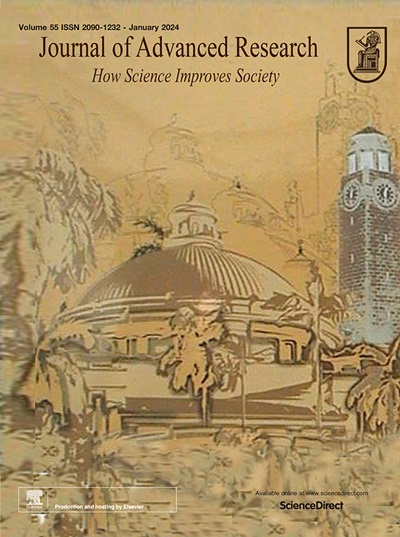间充质干细胞移植通过抑制pad4依赖性NET的形成来减轻tbi诱导的肺损伤
IF 11.4
1区 综合性期刊
Q1 MULTIDISCIPLINARY SCIENCES
引用次数: 0
摘要
外伤性脑损伤(TBI)影响着全世界数百万人,并经常导致严重的颅外并发症,特别是急性呼吸窘迫综合征(ARDS)。tbi引起的肺损伤的机制仍然知之甚少,目前的治疗方案也很有限。目的探讨人脐带间充质干细胞(hUC-MSCs)移植在缓解创伤性肺损伤和改善神经功能方面的治疗潜力和机制。具体来说,我们试图确定中性粒细胞胞外陷阱(NETs)在tbi诱导的肺损伤中的作用,以及hUC-MSCs是否通过抑制NET的形成来改善ALI。方法根据胸部计算机断层扫描(CT)及相关生理生化指标对stbi相关性ARDS进行诊断。收集TBI患者支气管肺泡灌洗液(BALF)和外周血(PB)标本,评价中性粒细胞活化及其与肺损伤严重程度的相关性。采用控制性皮质冲击(CCI)方法建立脑外伤小鼠模型。12 h损伤后,给予hUC-MSCs静脉注射。神经功能评估采用改良神经严重程度评分(mNSS)和平衡木测试。通过组织染色、血氧饱和度监测和显微ct评估肺和脑组织损伤。流式细胞术、免疫荧光和Western blotting检测PB、BALF和肺组织中中性粒细胞浸润和NET形成。为了进一步阐明hUC-MSCs对体外中性粒细胞的直接调节作用,我们将从TBI患者的PB中分离的中性粒细胞与hUC-MSCs共培养。随后对NETs和活性氧(ROS)的形成进行了量化。结果我们初步评估了脑外伤患者PB和BALF中中性粒细胞的活化和NET的形成。结果显示,PB中的中性粒细胞被激活,在BALF中观察到更明显的激活。同时,PB中NET的形成显著增加。发现BALF中中性粒细胞浸润程度与肺损伤严重程度呈正相关。在cci诱导的TBI小鼠模型中,hUC-MSC移植可显著改善神经功能,减轻病理性脑损伤。此外,hUC-MSC增加SpO2,降低肺损伤评分,并部分恢复II型肺泡上皮细胞的超微结构完整性。机制研究表明,hUC-MSC处理有效抑制中性粒细胞浸润、NET形成和肽基精氨酸脱亚胺酶4 (PAD4)的表达,PAD4是NETosis的关键酶。值得注意的是,与靶向PAD4抑制或dna酶介导的NET降解的药理学方法相比,hUC-MSCs在减轻tbi诱导的ALI方面表现出更优越的疗效。此外,体外共培养实验证实hUC-MSCs直接抑制TBI患者外周血中性粒细胞产生NET和ROS。结论hUC-MSCs通过抑制中性粒细胞浸润和NET形成,显著减轻tbi诱导的肺损伤,对治疗tbi相关肺部并发症具有潜在的治疗价值。这些结果突出了hUC-MSCs在解决TBI患者神经和肺损伤方面的临床潜力。本文章由计算机程序翻译,如有差异,请以英文原文为准。

Mesenchymal stem cell transplantation alleviated TBI-induced lung injury by inhibiting PAD4-dependent NET formation
Introduction
Traumatic brain injury (TBI) affects millions of people worldwide and often results in significant extracranial complications, particularly acute respiratory distress syndrome (ARDS). The mechanisms underlying TBI-induced lung damage remain poorly understood, and current treatment options are limited.Objectives
This study aimed to investigate the therapeutic potential and mechanisms of human umbilical cord-derived mesenchymal stem cells (hUC-MSCs) transplantation for alleviating TBI-induced lung injury and improving neurological function. Specifically, we sought to determine the role of neutrophil extracellular traps (NETs) in TBI-induced lung injury and whether hUC-MSCs improve ALI by inhibiting NET formation.Methods
TBI-associated ARDS in patients was diagnosed based on chest computed tomography (CT) imaging and relevant physiological and biochemical parameters. Bronchoalveolar lavage fluid (BALF) and peripheral blood (PB) samples from TBI patients were collected to evaluate neutrophil activation and its correlation with the severity of pulmonary injury. A TBI mouse model was established using the Controlled Cortical Impact (CCI) method. 12 h post-injury, hUC-MSCs were administered via intravenous injection. Neurological function was assessed using the modified Neurological Severity Score (mNSS) and balance beam test. Lung and brain tissue injury were evaluated by histological staining, oxygen saturation monitoring, and micro-CT. Neutrophil infiltration and NET formation were detected in PB, BALF, and lung tissue by flow cytometry, immunofluorescence, and Western blotting. To further elucidate the direct regulatory effects of hUC-MSCs on neutrophils in vitro, neutrophils isolated from the PB of TBI patients were co-cultured with hUC-MSCs. The formation of NETs and reactive oxygen species (ROS) was subsequently quantified.Results
We initially assessed neutrophil activation and NET formation in PB and BALF from TBI patients. The results revealed that neutrophils in PB were activated, with even more pronounced activation observed in BALF. Simultaneously, NET formation in PB was significantly elevated. A strong positive correlation was identified between the extent of neutrophil infiltration in BALF and the severity of pulmonary injury. In the CCI-induced TBI mouse model, hUC-MSC transplantation notably improved neurological function and alleviated pathological brain damage. Additionally, hUC-MSC administration increased SpO2, reduced lung injury scores, and partially restored the ultrastructural integrity of type II alveolar epithelial cells. Mechanistic studies demonstrated that hUC-MSC treatment effectively suppressed neutrophil infiltration, NET formation, and the expression of peptidyl arginine deiminase 4 (PAD4), a crucial enzyme involved in NETosis. Remarkably, hUC-MSCs showed superior efficacy in mitigating TBI-induced ALI compared to pharmacological approaches targeting PAD4 inhibition or DNase-mediated NET degradation. Moreover, in vitro co-culture experiments confirmed that hUC-MSCs directly inhibited both NET production and ROS generation by peripheral neutrophils isolated from TBI patient.Conclusion
Our findings demonstrate that hUC-MSCs significantly alleviate TBI-induced lung injury by inhibiting neutrophil infiltration and NET formation, offering potential therapeutic benefits for treating TBI-associated lung complications. These results highlight the clinical potential of hUC-MSCs in addressing both neurological and pulmonary damage in TBI patients.求助全文
通过发布文献求助,成功后即可免费获取论文全文。
去求助
来源期刊

Journal of Advanced Research
Multidisciplinary-Multidisciplinary
CiteScore
21.60
自引率
0.90%
发文量
280
审稿时长
12 weeks
期刊介绍:
Journal of Advanced Research (J. Adv. Res.) is an applied/natural sciences, peer-reviewed journal that focuses on interdisciplinary research. The journal aims to contribute to applied research and knowledge worldwide through the publication of original and high-quality research articles in the fields of Medicine, Pharmaceutical Sciences, Dentistry, Physical Therapy, Veterinary Medicine, and Basic and Biological Sciences.
The following abstracting and indexing services cover the Journal of Advanced Research: PubMed/Medline, Essential Science Indicators, Web of Science, Scopus, PubMed Central, PubMed, Science Citation Index Expanded, Directory of Open Access Journals (DOAJ), and INSPEC.
 求助内容:
求助内容: 应助结果提醒方式:
应助结果提醒方式:


